Brand & Design Principles
Ullagaddi MA Graphic Branding + Identity
Dharam
Unit 1 learnings:
Duration of the Unit eight weeks
Understand, assess and evaluate my practice through the application of visual research methods.
> Research/Visual Research
> Analysis Tools
> Visual Experimentation
I applied these visual research methods and analytical
strategies to my work in a variety of occasion to arrive at possible outcomes.
In my Visual Summary, I demonstrate my ability to engage in critical reflection of my work considering the principles; I exercised many of these tools in practice to generate content of this unit.

>>>>>>>>>>>>>>>>>>>>>>> >>>>>>>>>>>>>>>>>>>>>>> >>>>>>>>>>>>>>>>>>>>>>> >>>>>>>>>>>>>>>>>>>>>>> >>>>>>>>>>>>>>>>>>>>>>> >>>>>>>>>>>>>>>>>>>>>>> >>>>>>>>>>>>>>>>>>>>>> >>>>>>>>>>>>>>>>>>>>>>> >>>>>>>>>>>>>>>>>>>>>>> >>>>>>>>>>>>>>>>>>>>>>> >>>>>>>>>>>>>>>>>>>>>>> >>>>>>>>>>>>>>>>>>>>>>> >>>>>>>>>>>>>>>>>>>>>>> >>>>>>>>>>>>>>>>>>>>>>> >>>>>>>>>>>>>>>>>>>>>>> >>>>>>>>>>>>>>>>>>>>>>> >>>>>>>>>>>>>>>>>>>>>>> >>>>>>>>>>>>>>>>>>>>>>> >>>>>>>>>>>>>>>>>>>>>>> >>>>>>>>>>>>>>>>>>>>>>> >>>>>>>>>>>>>>>>>>>>>>> >>>>>>>>>>>>>>>>>>>>>>> >>>>>>>>>>>>>>>>>>>>>>> >>>>>>>>>>>>>>>>>>>>>>> >>>>>>>>>>>>>>>>>>>>>>> >>>>>>>>>>>>>>>>>>>>>>> >>>>>>>>>>>>>>>>>>>>>>> >>>>>>>>>>>>>>>>>>>>>>> >>>>>>>>>>>>>>>>>>>>>>> >>>>>>>>>>>>>>>>>>>>>>> >>>>>>>>>>>>>>>>>>>>>>> >>>>>>>>>>>>>>>>>>>>>>> >>>>>>>>>>>>>>>>>>>>>>> >>>>>>>>>>>>>>>>>>>>>>> >>>>>>>>>>>>>>>>>>>>>>> >>>>>>>>>>>>>>>>>>>>>>> >>>>>>>>>>>>> Content: Area of focus ‘Waterloo’ Observation & Research / Visual research Categories information Analyse : Denotation/connotation SWOT/TOWS 5Ws Visual Experiment: Idea generation Iterative Point of difference Analyse: Metaphor Rhetoric Icon/Symbol Meaning & Context
Zora Neale Hurston
“
Research is formalized curiosity. It is poking & prying with a purpose.
“
Visual Research Book Study:
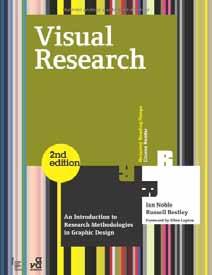
According to (dictionary.com, 2017) dictionary definition, research is ‘persistent and methodical inquiry or investigation into a subject in order to discover or revise facts, theories, applications’. In general soul purpose of the research is all about engaging with the searching
methodologies to finding find new knowledge. Whereas Visual Research is more related to design, according to (Noble and Bestley, 2011) visual research authors ‘ visual reseach is a practice based not on the search for answers but on the quality and manner of how the questions are asked. Therefore
visual research is more than just a working process but an outcome in its own right.
Further, in the book Ian and Russell clarify that how the field of visual research fitted within the practice of graphic design and in their teaching experience over the last

decade how they practically tested many of the visual research methodologies.
Study of this book had given the understanding of the various aspects of the visual research, and the case studies share in this book were the testimony for the effectiveness of the
methodologies. Furthermore, the book has provided me with the understanding of research methodologies, a wide range of practical and theoretical applications, an introduction to field research methodology which is, in fact, an analytical and a practical tool for graphic designers.
CASE STUDY 02: Emotionally Vague
In this study participants were asked to record visually, how and where they felt certain emotions. In this research, participents were invited to choose a pen and mark onto the image where and how they experience specific emotions.
In this research data collection also recorded personal information on the participants, further the visual information sorted and arranged by age, gender and nationality. Finally, visual information was assembled to identify the location on participant’s bodies where they felt those emotions, and colour and direction that they associated with the each feeling.

Idea Searching Book Study:
In the book (Bramston, 2009) ‘Idea Searching’ author tells us, idea searching requires all of the senses and ideation should not be a specifi activity.

The idea generation is a continual process of observing, listening and recording. In some sense, inspiration is everywhere, all the time and
everything could be a source of inspiration. What we need is eyes to see, ears listen and contemplate on the subject.
In the initial stages of ideation, it is important to explore all the possible ideas and suggestions. It is necessary to identify the potential in thoughts and
ideas, push their bondarise. Individuals who lack the courage to take the risk with their ideas will continuously to follow the mediocre path.
However, Idea search is obiviously a continual process of forming possible solutions and refining the
outcomes. An individual should always be on the lookout for a thought catalyst.
This book has helped me to understand different pathways for ideating and how to observe and record.
Another important thing I learned about idea bagage,
such as preconceived notion, can become a mental hurdle. Having an open mind helps thoughts to emerge naturally.
Cultural Influence
(Bramston, 2009 p 76)
The term ‘culture’is slightly obscure and is frequently subject to different interpretations; it relates to objects, social interaction and behaviour. It is important to recognise that an accepted custom in a particular culture. A better understanding of different cultures and practices will substantially improve the creativity in design.


Idea searching Book Study:
Searching for ideas is a process that involves many ideation methodolgies. Generaly it is understood brainstorming is often considered as the initial stage in ideation but mater of the fact ideation process begins much earlier.
This book has helped me to discover the ‘idea searching’ approach strategies followed by many of the leading design practitioners from various fields from product/industry designers to garment/fashion designers, communication designers to Architect.
Another learning from chapter observation; which is explaining the importance of ‘observation’ and how it enable a designer to come up with innovative solutions. Moreover, the section specifies ‘not to watch but observe, how do a person interacts
with his/her environments and do they make alterations to products that were intended to be used in a particular way?’. No observation, no stimulation, no imagination.
Brainstorming (Bramston, 2009 p 14)
An idea can strike you anytime, but it can also be brought into by doing some exercises. It is always thought that the development of an idea starts with a brainstorming session. In general, people believe that the brainstorming exercise quickly leads to the concept or idea generation, but on the other hand, such practices rely on individuals who are having experiences in related subject of the brainstorm session. Only those with the previous understanding of the subject knowledge could contribute much better direct or indirect manner to the overall session. The development of an idea could start much early; It can take its fulfilment stage once there is a suitable verbal or visual catalyst. It could be useful to consider brainstorming session as a platform to releasing experiences and stimulating the imagination for ideas and further concept direction.
Inspiration: rubble (Bramston, 2009 p 28)

A building reclaim yard can serve valuable inspiration for unconventional approaches to design. It is important to think about objects with an open mind and study how they may influence an idea or concept rather than just considering it as construction rubble.

Taking objects out of context and exploring their inherent conceptual power of the wreckage objects can lead to exciting developments that break away from the ordinary and routine ideas. Sometimes irregular examination of items within the reclaim yard can provide a useful stimulus for conceptual ideation.
It is critical not just exploring distinct teams, but keenly look at the relationships of the items in the manner these rejected artefacts are set out. It’s reasonable that everything is noted, both physically and mentally.
Play
(Bramston, 2009 p 140)
Play within the design is an important aspect, through play that social barrier can be taken down, the process becomes much more engaging, the participant would understand and develop without inhibitions. The nature of the play, suggests that things are kept simple, and complications are mitigated. If a complication arises, play questions and looks for alternative rule or approaches so that progress can be achieved and the process can be enjoyed.
Solving ideas through play means things aren’t too serious and thoughts can be thrown away easily or investigated from different viewpoints. Play exercises allow things to be taken apart, reassembled and taken apart again so that ideas can be examined.
Starting Points
(Bramston, 2009 p 138)
I was at a local bar with a friend, brainstorming on some ideas using napkins. By the time we were getting ready to leave we had a whole stack next to use and wondered: “Wouldn’t it be great if there was a way to keep them somehow together?” That thought never left my mind and a few weeks later the Napkinsketchbook was born.” - Fridolin T. Beisert
An idea is simply a starting point, a point that may be the beginning of a proposal, but it will need to be examined, scrutinised and challenged at every juncture before it is considered as a solution. If the initial idea survives the scrutiny of the evaluation process, then it could evolve into a final solution. Often a primary idea is confused with a final solution. It is simply an indicator or a glimpse of what might be the final solution.
Scrapbook
(Bramston, 2009 p 46)
A scrapbook is an important but most of the time ignored its importance in idea generation process. The scrapbook should be developed continually with visual representations, collected items and other artefacts of interest. there is a only rules that collect anything and everything that strikes a creative chord. The aim of the scrapbook is to catalogue memories and experiences so to catalogue memories.
the scrapbook requires continual care and maintenance to ensure that sourced information does not get damaged and that emerging areas of interest are represented.



How to be an Explorer Book Study:

According to (wired.com, 2008) article, the role of an explorer, to witness and record the world. It is the act of the documenting method that we learn thereby why things are the way they are. The explorer attitude is important because it helps us to define what attract us, what drives us, what
make us passionate about life, in which new directions we might want to go. Either you approach it from an artistic or scientific viewpoint, there is much to explore and examine.
Artists and scientists investigate the world around them in similar ways, by

inspecting, gathering, recording, analyzing, and correlating. In her captivating book (Smith, 2011) author, encourages readers to partake in exploring their world,
My learning from the book, after understanding few methodologies suggested, I
started collecting items and thoughts mostly acquired from investigating my surroundings, which led into an entirely new world.
When we were kids, we all had this explorer tendency; but lost when we grew up. The book rekindles the lost
explorer in me; it is a highly thought-provoking book. There are several exploration methods, all of them could contribute to enhancing my sensibility towards objects and subjects perception.


(Pikaland.com, 2008)
Keri Smith suggests, ‘observe and document the world around you as if you’ve never noticed it before’. Take notes, gather stuff you find on your travels, record findings.
Once you picked sufficient stuff, spent time in notice patterns, copy or trace. Focus on one object or subject at a time and record what you are attracted.
(Author obsessed, 2012)
My area of Focuse Waterloo Pigeons problem.

Theoretical learning of research methodologies:
Research methodologies bring with them distinct terms that are useful to the designer in describing what is taking place in the graphic design project. A notable portion of research methodology phrases brought from outside the field of graphic design. Principally borrowed from associated
disciplines that have a long tradition of reflection and debate. Various methods borrowed from linguistics, communication studies, philosophy and social sciences. These fields have given useful terms and definitions that designers have been able to use more descriptive language
PURE RESEARCH
APPLIED RESEARCH
for the design process at work. (Noble and Bestley, 2011, p.16)
Broadly four research methodologies such as pure/ basic research, applied research, empirical research and deductive research seeped into graphic design, All four serve effectively depending
EMPIRICLE RESEARCH
on the nature of the project brief. However, all four research methodologies have a definite purpose of their existence; they will serve best if we understand them and apply appropriately.
DEDUCTIVE RESEARCH
Research because: research MeResearch thodology Interim outcomes More Research More Research
I have a problem, I need to solve it
I have observed something, I wish to study it
More Research
Resolution(outcome)
By definition, pure/basic research is a systematic study conducted towards creating higher knowledge/understanding of the fundamental aspects of phenomena. This study does not seek to solve any intended problems, but to increase knowledge, add new insights to the given field.
MeResearch thodology Iterative Analysis stages Testing Reflection
Problem (brief )
Whereas applied research behaves exactly opposite to pure research, it’s intention is to solve practical problems. Therefore, applied research is a sort of wellorganized inquiry comprising the practical application of science.
Resolution(outcome)
Problem (initial observation)
Evidence-based reflection
MeResearch thodology Experiment+theories Inquiry development
On the other hand, according to (Psychologyresearchhelp. wiki.usfca.edu, 2016), empirical research is based on observed and measured phenomena, that propels knowledge from actual experience rather than from theory or belief.
Resolution(evidence)
MeResearch thodology
I have a conclusion, so I need to support it hence I want to conduct research. Idea (conclusive)
Data-Gathering+ formulation Investigativedata-search arConclusive gument
However, deductive research (Research Methodology, 2016), examines a known theory and tests if that theory is valid in a given situations. It has been remarked that “the deductive approach follows the logic most closely. The reasoning begins with a theory and starts to a new hypothesis. This new theory is put to the test; the results eventually lead to a confirmation or a rejection of the hypothesis.
Looking at the nature of my Waterloo project brief I determined most appropriated research methodology could be ‘Applied Research.’ Hence I followed the cycle of investigation methodologies, testing, reflecting and outcome.
What is Design Brief and its signification:
Jacob Cass (JUST™ Creative, 2008) writes, Whether you are a designer or a client, an appropriate design brief is one of the most crucial factor in guaranteeing that a project is successful. Further, his article tells how to write an effective design brief that will be both useful to the
client and the designer. In some sense, a design brief is essential to any design project; it will supply the designer with all the data needed to carry on the design task.
A design brief should fundamentally focus on the results and outcomes of the
design and the business goals of the project. It should not try to deal with the design aesthetics; it is the designer responsibility to make sure highest standards of aesthetic.
Furthermore, the design brief also enables designer/client to concentrate on exactly what
they want to achieve before any work commences on the design project. In a nutshell, a good design brief will assure a highquality design that meets all the needs, provided the project assigned to the right designer.
A brief should precisely answer following questions to be a
useful tool. Such as what is the nature of business? What are the goals? why? Target audience/market? What copy and pictures are needed? What are the specifications? What Is Your Budget? What are the timelines/deadline?
The currently used communication (table tent card) device, which hasn’t been effective in influencing customer and asking them to change their behaviour towards pigeons in the premises.
Brief:
What is the nature of company?
- What is the nature of service?
Network Rail into rail services, to the addition to that the company operates and maintains Waterloo station.
- What is history of the company?
In 2002 Network Rail took over as owner and operator of Britain’s railway infrastructure.
What is the goals?
- what is the purpose of the new design project?
This project is mainly concentrated on maintains issue of the Waterloo Station, specifically related to the pigeons. The primary objective is to build awareness for the ‘Benugo’ restaurant customers, not to feed the pigeon.

What are you trying to communicate and why?
- The objective is to build awareness?
Building awareness among the customers ‘what risks pigeon could pose to human health.’ Hence not to feed birds in the premises.
-Total reinvent the proposition or only updating and make it more efficient?
The current Placard (table tent card) design is not communicating the ‘Health risk’ proposition. Therefore new device has to be created with delivering the new position.
Target audience/customer?
- Target audience? All ‘Benugo Cafe’ customers
What copy and pictures are needed?
- What copy requirements in the design?
Text must communicate health risks posed by pigeons proximity to human; All the four diseases such as Histoplasmosis (signs of the illness include flu-like symptoms with chest pains, fever and fatigue among them). Cryptococcosis (a lung infection).
Psittacosis (symptoms from mild flu-like illness to pneumonia) and Toxoplasmosis (reveals itself in the form of skin problems like roseola) are most common illness could spread if pigeons aren’t kept in control.
- What pictures/images to be used?
Do not feed pigeons logo, Network Rail logos and images of the four diseases.
What are the specifications?
- What size?
Print area shouldn’t exceed A3 paper size
What Is Your Budget?
45% more will be spent compare current placard (table tent card)
Primary Research findings:
Primary research is all about sourcing raw materials that a designer directly works with in relation to research for the given project. Primary research approaches might include marketing strategies, such as audience surveys or interviews, or the direct testing of potential visual solutions with a

real audience in the real world.
My field of study subject is ‘pigeon in Benugo premises and possible human health risk.’ Therefore I conducted three interviews, one with the Benugo attendant, another with Benugo customer third one is the pest controller who
is a hawk handler, serves twice a week at Waterloo station.

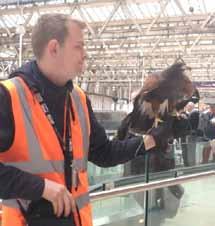
Primary research majorly involves the collection of first-hand data by interviewing with stakeholders. It is often undertaken to gain the insight into an issue by asking questions and by interviewing.

Hence questionnaire method of data collection becomes powerful tool to obtain information about the subject, as well as questionnaire helps in focusing the respondent’s attention on all the major issues of the subject. However, this survey method has many advantages, but there
are few disadvantages also. One such disadvantage can be questionnaire itself, which does allow to tap the intuitive responses.
01. Interview with the Benugo restaurant staff member 02. Interview of the Benugo restaurant customer 03. Interview of the Waterloo pest controller (Hawk handler)
01 03 02
Primary Research findings:
Benugo Coffee shop staff interview:

What is your job responsibilities in ‘Benugo’ and how long have you been serving here in this shop?
- Responsibility: Taking care of this shop with my four more colleagues. - Area of service: Mainly coffee and snack food served to eat in
Do you see ‘pigeon’ in the Benugo premises as a problem?
Yes/No factual reasons: Yes, they eat food, create a mess, they might spread diseases too. Yes/No emotional reasons: People scared of they snatching food from their hand
Does customer complain about the pigeon in the shop premises?
Yes, No and Not bothered: Very few complained, many don’t complain in general thinking its Waterloo station authorities issue, and some don’t mind it pigeons being around them.
Give me some example the nature of problems faced by your customers due to the pigeon in the premises? How often: maybe weekly once or twice Kind of trouble: Some customer finding it difficult to see pigeon approaching for their food, flying over their head and fear of poo on the table, etc
How you typically deal with such situations when customer complaints about the pigeon snatching their food?
When customer’s food is snatched: we replace their order, considering its shop’s responsibility.
Angry/disturbed customer: request not to be away from the food. Otherwise, the pigeon will snatch the edible items.
What are the main reasons for the existence of the pigeon problem in this coffee shop premises?
Pigeon existence in the Waterloo station: reason could be shelter Pigeon existence in the Benugo: main reason is for food they come.
What are the measures have been taken to address the pigeon issue?
By Benugo: by not keeping dustbin, the reason is such dustbin could become a hub for pigeons to source their food. Table placard with a piece of advise message saying NO TO FEED. And cleaning table more often so that no food residual left in the premise
By Waterloo authority: Pest control measures are taken to control pigeons such as ‘Hawk’ service.
Primary Research findings:
Interview with Benugo customer:
How often do you visit this coffee shop
- how many times in a month: mostly three to four times - Which time you visit(morning, afternoon or evening): mostly afternoon some time in the morning.
Your primary purpose of visiting Benugo?
- coffee: sometime if I am visiting in the morning or evening -food: when I visit afternoon I take food and coffee -other reasons: In a case of I need to wait for a train for a longer time I hang out in Benugo.
Do you see pigeon presence in the Benugo presence as a problematic?
Yes: Ya,I think it is a problem, i don’t like pigeon on my table or near by while i am eating, they could effect our health indirectly.
No: If I am having coffee from my take away cup in general I don’t feel disturbed or worried by pigeon presence
Have you noticed any insident of customer worried about the pigeon in the premises?

Yes: Somedays ago a person was sitting on next table eating his sandwich and waiting for his coffee. The moment he heard his coffee call he left his sandwich on the table to fetch his coffee, by the time he returned to his table his sandwich was stolen by the pigeons and the food spread all over the table and floor. No:
What are the reasons for the pigeon exists inside this Waterloo premises? Reasons: for shelter
Do you believe pigeon be the cause for health and hygiene issue?
Yes: I am sure because I read there are many diseases which could easily spread from birds to human. No:
How to fix the pigeon problem?
Benugo’s responsibility: Maybe making sure no food residual left on the table by constantly clearing and cleaning the tables. Instructing their customers not to feed or entertain pigeons in the premises.
Waterloo Authority Responsibility: They must follow stringent pest control regime
Primary Research findings:
Hawk Handler Interview:
Hom many time in a week Hawk service is provided in Waterloo station?
-Number of times: 2 times in a week
-How many hours: 2 hours
Why do you believe this is the best solution to pigeon problem?
-because less costly: yes in away -because less harmful: we can say so -because the natural solution: definitely using the natural cure
How effective is this solution? How to improve? What would be that?
-Yes: many be more often using this service -No: -why: maybe it help to fix this pigeon problem totally
Interaction with Network Rail staff.
Pest control steps taken?
-Some measures: One of the major pest problem faced by Waterloo station is the pigeon, to control birds we have contracted pest control company. The company handles the issue by hawk patrols, laying out bird spikes and by installing Hawk decoys.

What problem pigeon bring to the station premises and their travellers and worker?
-Problems for the station: pigeon poo in one of the reasons for metal beams erosion and another reason is it pose a threat to the cleanliness of the station.
-Problems for the passenger: fear of pigeon poo on the passenger.
-Problems for station staff: due large number of pigeon presence in the premises, there is a constant need of cleaning the floor is required.










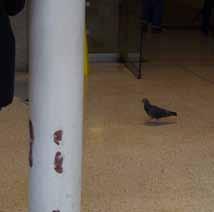


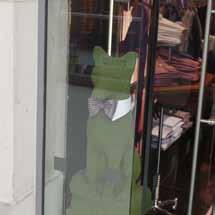

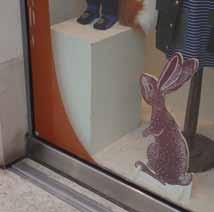





 Animal presence in Waterloo...
Animal presence in Waterloo...
Human presence in Waterloo...



















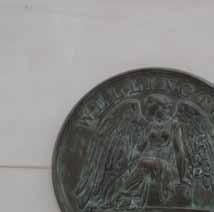











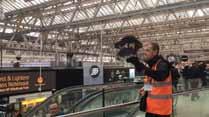











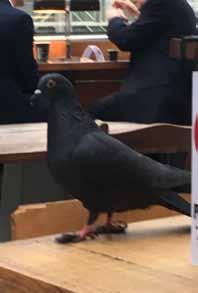






Secondary & Tertiary Research findings:
Secondary research could begin once we decided our ‘field of study’ by looking at existing research already undertaken in the area and used to support the designer’s research. Secondary research might include already published surveys and interviews with similar audience groups,
and the investigation of a series of successful visual communication strategies which falls under an approximate subject area.
Further, we can conduct tertiary research, which is fundamentally based on secondary sources
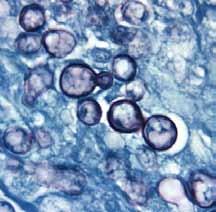
and what others have undertaken. A review of the existing knowledge and trusted methodologies.

Ian and Russell (Noble and Bestley, 2011, p. 20) writes, design experimentation and investigation and applied design thinking is increased-
allowing ideas effectiveness and usefulness to inform.
Further, they point out about Ronal Barnett’s book ‘Higher Education: A Criticle Business (1997)’ which discusses the essential idea in this tradition in the western university is that it is possible to critique
action so that we can produce more enlightened or more efficient forms of action.
01. Unhealthy effects of pigeon on human health 02. Trafalgar Square Pigeon problem solved, case study 03. All about London’s Pigeon 04.Pigeons, a part of popular culture.



(seattles travels,
(Control, 2017) (londonpigeons.co.uk,
2011)
2013)
01 04 02 03 (SLATER, 2014)
London city mayor famously called pigeons as ‘flying rats’.
Pigeon Effecting Human Health:
Pigeons are everywhere in the Waterloo station and known by a lot of people as ‘rats with wings’. Some people might find it a harsh word for this lovely bird. However, pigeons are considered as pests and can transmit some deadly diseases. Bird control measures are regularly taken by authorities
to try and control the rapid increase in numbers. Pigeon are descended from rock doves the feral pigeon family has adapted well to living in the cities, adjacent to humans. The problems for disease happen when density levels of birds are very high with droppings and feathers collecting at roosting
sites. These toxic piles contain a few well-known diseases that can affect the human health.
On my secondary research, I try to look for those very common diseases which could quickly spread and causes health issues. The revelation of this research led me to
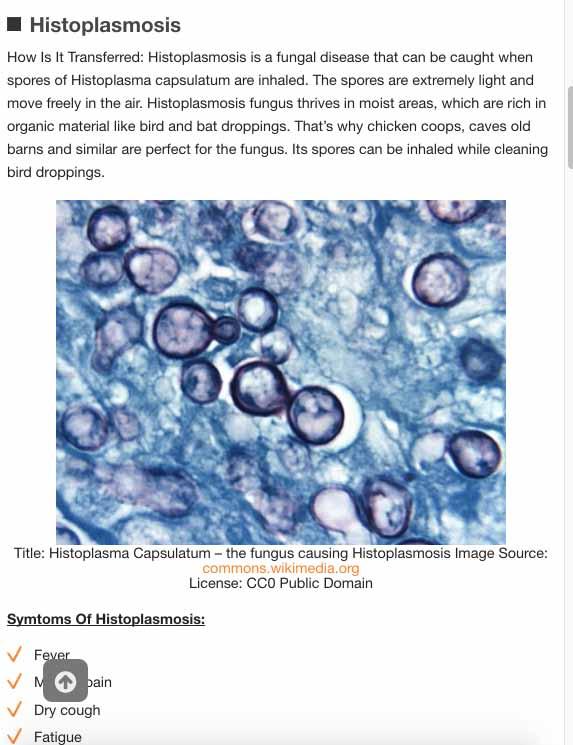

believe pigeons are serious pest issue; it has to be dealt with caution. According to (Control, 2017) article, four diseases such as Histoplasmosis (signs of the illness include flu-like symptoms with chest pains, fever and fatigue among them). Cryptococcosis (a lung infection). Psittacosis
(symptoms from mild flu-like illness to pneumonia) and Toxoplasmosis (reveals itself in the form of skin problems like roseola) are most common willness could spread if pigeons aren’t kept in control.


Feeding Trafalgar’s pigeons illegal
Monday, 17 November, 2003, 10:16 GMT
Trafalgar Square Case Study:

As Andy writes (McSmith, 2010) in his article, Ten years ago, no one spends time around in Trafalgar Square unless they had a tolerance of pigeons. That time the Square was known for Nelson’s Column, four metal lions, and a flock of pigeons so dense that a child could get lost in crowd.

According to the video: Amazing West End say, ‘Ken Livingstone was elected as London’s first Mayor, in 2000, he was prepared to invest £25m in making the capital’s most famous square a more attractive place to assemble’.
There have been several
methods followed to address the issue, most effective one was the introduction of hawks to scare pigeons off. However, some believe that it was a costly affair. According to (Rowley, 2017) article, Mike Tuffrey, leader of the Liberal Democrat said: “A hawk that costs the taxpayer more than

£50,000 a year was a huge amount. Alternative ways must be found, such as nesting prevention and chemical contraception in the feed.
Harry Mount (Mount, 2009) mention in his article that ‘The purpose introduction of the hawk was not to kill the
pigeons, but to disperse the bird’s flock, and that’s what hawks do very efficiently.
This reseach had given me understandings of problems related pigeon can be solved by following certain preventive methods and involving the public to support the case.
The Harris Hawk (dailymail.co.uk, 2009) , native to the southern states of the U.S. and it was the perfect bird for this type of work.
But he doesn’t come cheap. Last week, it emerged that his servicesfour hours a day, between 6.30am and 10.30am, plus transport from his Essex roost and the chicken titbits used to keep him sweetcost almost £50,000 a year
(trekearth.com, 2016) (visitlondon.com, 2016) (dailymail.co.uk, 2009)
The hawks were introduced in 2003 Hawks works for 4 hours a day Works between 6.30am & 10.30am Costs almost £50,000 a year The number of pigeons decreased from 4000 to 120
Pigeons can see millions of different hues and have better colour vision than most animals on the earth.
A Ten Years Study
About Pigeon:
According to (Taylor, 2013), Pigeons have equipped to evolve and outsmart many other species; they have successfully immigrated various parts of the world and settled become part of those places - wherever people can be spotted pigeons can be found. However, many

people see these adorable creatures as rats with wings.
Pigeons also demonstrate some capacity for object recognition ability. The experiments show, once the food is shown to a pigeon and then sneaked under a small cardboard carton, have revealed that many times they
remember where the food kept!
Another survey finding confirms that pigeons exhibit an inclination for foods which have high saturated fats, such fats are rarely found in their natural intake of seeds. Hence they are more attracted towards junk food.
Pigeons are highly adaptable and are usually happy to eat almost anything. One of the trends observed in the last 25 years is that the food of pigeons in London has become more diverse; particular pigeons now eat a wider array of food items.
This research had provided
me ample amount of factual information about pigeon in London. There diet to behaviours and a favourite food item to the cognitive ability of the pigeon.

An average day in a pigeon life...
Research shows that pigeons are one of only 6 species to be able to recognise themselves in a mirror...
(Taylor, 2013)

(dailymail.co.uk, 2013)
Pigeons are a part of the popular culture:
According to (Penne, 2015) article, Pigeons had played a significant role in the war one and two. Due to their homing ability, they were oftentimes used as military messengers. The pigeon’s job was unsafe. The enemy soldiers frequently tried to shoot down pigeons, understanding that
discharged birds were carrying important information.
According to (Jerolmack, n.d.) ‘How Pigeons Became Rats from hero’s statuse: The Cultural-Spatial Logic of Problem Animals’ writes that pigeons are a problem in cities throughout the world. In UK,
Europe and USA, businesses thrive by contracting with local governments to control this “pest.” Numerous cities have illegalised pigeon feeding to control their numbers and the problems linked to them from diseases to the property damage.

A phrase commonly used to represent the popular dislike for pigeons is “rats with wings.” While pigeons have been a part of city life for thousands of years (Levi 1963), this problematic framing is a recent phenomenon. Today it is inreference to pigeons that newspapers
declared, “Rat of the sky is now public enemy No. 1”.
This research helped me to understand the cultural impact on the perception, once pigeon was considered as a messenger but now it is a rat of the sky, they become part of the problem.
Banksy is an England-based graffiti artist, (SLATER, 2014) renowned for political activist art, his stencilled figures, which have sprung up on the city walls, depicting dull grey pigeons carrying up anti-immigrant handheld banner –‘Migrants not Welcome’ ‘Go back to Africa’, in the direction of a green sparrow. ‘The pigeons’ opinions are quite close to real views of what people were thinking according to the artist.
Soho Square neon pigeon installation (Time Out Blog, 2015)
Murphy’s bright, eye-catching birds were basically in the context of the Art Social ’14 festival, and now they’re installed onto the lampposts of Soho.

As we know, pigeons had a obtained a bad reputation and regarded as pests. According to Murphy, these colourful pigeons aims to foster questions encompassing the struggle for acceptance, feelings of marginalisation and homelessness in city environments.

According to (Gessato Blog, 2012) writes, we usually think about the umbrella as that unfortunate thing we have to use in those unpleasant rainy days. But with Staple Design‘s street decided to bring out elegance and (London Underground‘s) remarkable craftsmanship products. The Pigeon is a traditional a wood-

handled umbrella with designer Jeff Staple’s signature bird printed all over the umbrella and its pigeon dropping on the coloured top has the uniqueness.
 (SLATER, 2014)
(SLATER, 2014)
2015)
(londonundercover.co.uk, 2016) (londonist.com,
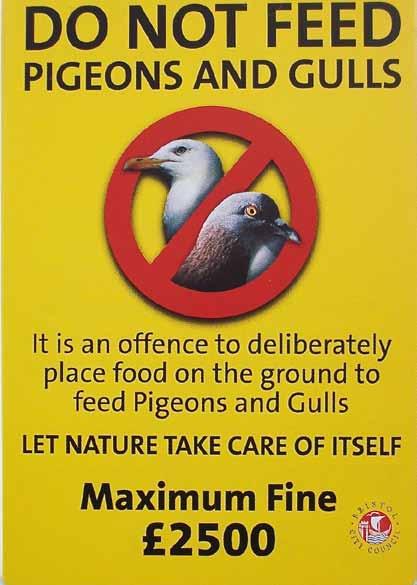









 Legal notice receiver for feeding pigeons...
Legal notice receiver for feeding pigeons...

>>>>>>>>>>>>>>>>>>>>>>> >>>>>>>>>>>>>>>>>>>>>>> >>>>>>>>>>>>>>>>>>>>>>> >>>>>>>>>>>>>>>>>>>>>>> >>>>>>>>>>>>>>>>>>>>>>> >>>>>>>>>>>>>>>>>>>>>>> >>>>>>>>>>>>>>>>>>>>>> >>>>>>>>>>>>>>>>>>>>>>> >>>>>>>>>>>>>>>>>>>>>>> >>>>>>>>>>>>>>>>>>>>>>> >>>>>>>>>>>>>>>>>>>>>>> >>>>>>>>>>>>>>>>>>>>>>> >>>>>>>>>>>>>>>>>>>>>>> >>>>>>>>>>>>>>>>>>>>>>> >>>>>>>>>>>>>>>>>>>>>>> >>>>>>>>>>>>>>>>>>>>>>> >>>>>>>>>>>>>>>>>>>>>>> >>>>>>>>>>>>>>>>>>>>>>> >>>>>>>>>>>>>>>>>>>>>>> >>>>>>>>>>>>>>>>>>>>>>> >>>>>>>>>>>>>>>>>>>>>>> >>>>>>>>>>>>>>>>>>>>>>> >>>>>>>>>>>>>>>>>>>>>>> >>>>>>>>>>>>>>>>>>>>>>> >>>>>>>>>>>>>>>>>>>>>>> >>>>>>>>>>>>>>>>>>>>>>> >>>>>>>>>>>>>>>>>>>>>>> >>>>>>>>>>>>>>>>>>>>>>> >>>>>>>>>>>>>>>>>>>>>>> >>>>>>>>>>>>>>>>>>>>>>> >>>>>>>>>>>>>>>>>>>>>>> >>>>>>>>>>>>>>>>>>>>>>> >>>>>>>>>>>>>>>>>>>>>>> >>>>>>>>>>>>>>>>>>>>>>> >>>>>>>>>>>>>>>>>>>>>>> >>>>>>>>>>>>>>>>>>>>>>> >>>>>>>>>>>>> Content: Area of focus ‘Waterloo’ Observation & Research / Visual research Categories information Analyse : Denotation/connotation SWOT/TOWS 5Ws Visual Experiment: Iterative Idea generation Point of difference Analyse: Metaphor Rhetoric Icon/Symbol Meaning & Context
Analysis methodologyDenotation and
Connotation:
Analytical and propositional methods are a fundamental part of the visual research methodology. Further. Ian and Russell (book) talks about the visual research which involves deconstruction and interpretation of existing visual works and the development of new design strategies/methods.
It is important for a designer to have an understanding of analysis tools such as denotation-connotation, SWOT, TOWS, 5W to analyse the design objects and artefacts.
Denotation: stands for the literal meaning of the object or subject, it could be described
as obvious or common sense. Connotation: surely more than direct meaning or a surface definition, it is a getting into deeper meanings, generally such meanings are influenced by cultural, social and personal reasons; hence they are very different from denotation.
Denotation & Connotation of my ‘field of study’ subject; Pigeons
Denotation:
- Pigeons are feeding in Benugo Cafe at Waterloo station

- Most of the time pigeons are looking for leftover food in the Cafe.

- There is a constant flow of pigeons at any given point looking for food in the cafe premises.
- Most of the pigeons look fit and fat; they must be getting plenty of food easily.
- Because of pigeons are birds could fly quickly and reach leftover food on the table immediately as soon the person vacate the table.
- Benugo Cafe is more of a bird century then a Cafe.
- In lunch hour more pigeons are attracted toward Benugo Cafe due to more food availability on the premise.
- Some of the cafe customers annoyed by the share presence of the birds in the premises
Connotation:
-Pigeons are war heroes; they had played an active role in World War One and Two by carrying messages.
-Pigeons were a biological email system
- From centuries pigeons had been part of human society and friend of humanity, until recently they have gained a status of pest
- Like any other birds pigeon desperately search for food, it seems their aim in life is to look for food.
- Pigeon’s unfearful attitude (in the Benugo Cafe premises ) narrates a different story about them as aggressive birds than as we were all known humble and shy bird.
-Many people unaware of the fact that the pigeon’s proximity could pose a health risk, as former London mayor famously said pigeons are “flying rats”.
- Giving rat association with pigeon mayor able to convert friendly bird into a pest.
Denotation & Connotation of my ‘field of study’ subject; Pigeons
Denotation:
- A straightforward public awareness communication item used in the Benugo Cafe.
- The tone of voice of the communication is an attempted to seek customers support for keeping the cafe premise ‘pigeon free’.

- It is a passive communication approach, tone of the text has a requesting tonality.
- It is an average communication material, doesn’t forces you to act upon, hence lacks the ability to be an awareness campaign.
- It is a cost effective communication piece.
- It has been observed customers hardly respond to the message the table tentcard. Hence it cannot be considered an adequate piece of communication material.
- In the text, it is mentioned to bring ‘rubbish to the counter.’ Because the don’t keep the bins to avoid pigeon being attracted.
Connotation:
- The statement ‘Help us to pigeon proof’ on the placard has a neutral tone and lacks the punch-seeking action. Hence it has qualities of a weak leader!
- To change the behaviour of the customer is very tough, but it is a sure path to success, hence this notice-card set on changing the behaviour to modify the situation.
- It is a usual rhetoric; often placards tell you ‘Don’t do this’, ‘Don’t do that’, they are ordering you and demanding from you to obey what they are saying. In some instance, they clearly write, in the case of not obeying the rules, you will be subjected to punishment.
- Ever since pigeons got this new social status as ‘flying rats’ our perception has changed from considering them as a lovely messenger birds to a pest.
- The symbol of NO (red circle with a cross line) sign is a most recognisable icon in the world; it has broken language barriers and became an omnipresent symbol for NO.
SWOT analysis methodology:
A SWOT analysis is a conventional approach in the fields of marketing and advertising, in some cases have a similar significance to design methodologies. Some of the analyses from SWOT could create the basis for the final stages of the research that will transform this information into
an outcome or final solution.
According to Ian and Russell ((Noble and Bestley, 2011, p. 190) terms received from market research and economics, SWOT is acronyms for two systems of analysis which are associated with the development of strategies and expected
outcomes. SWOT analysis describes an examination of the internal Strengths, Weakness and external Opportunities and Threats which are affecting an organisation or a design proposal. Typically the report seeks to answer two usual questions, what is the current status of the
proposed problem or question? And what is the intention or goal of the proposal?
Strength:
- The clarity of the communication is perfect; it clearly states what is expected from the audience.
- Cost efficient and easy to produce communication device.
- This piece of communication efficiently tackles the issue of keeping Cafe premises clean.
-A placard displaying at each table is a good idea, it directly speaks to the customer (audience), when it is most expected.
- Benugo Cafe removed the dust bin from the cafe premises to avoid pigeons nuisance. Hence this communication piece serves perfectly to tackles the garbage issue.
Weaknesses:
- Placard’s tone of voice is mild and doesn’t communicate the seriousness of the problem.
- Placard device looks flimsy hence lack the serious attention
- Poorly designed and produced could be the another reason for consumers not considering it as a serious notice.
- The pigeon situation in the premises is grim, it needs active participation from the customer to tackle the issue, but this communication placard doesn’t motivate for action.

- This piece of communication lacks to describe what are the benefits of making this place ‘pigeon proof.’
Opportunities:
- A placard is most cost effect communication piece to produce.
- This device helps us to speak to the audience without disturbing their privacy directly.
- On these devices (placard) one can apply action oriented tone of voice, asking readers to partake to fix the issue/problem.
- This device could be more than just being a notice piece. It can be used for spreading awareness so that audiences are empowered with information to act for a good cause.
Threat:
- Because of the low quality of the placard (interms of material used and printing quality) it feels non-serious issue.
- The tone of voice is seeking help from the audience, which is significantly mild and passive communication method for serious matter; therefore this might not yield the anticipated results.
- The communication device is not fixed to a place (like a poster on the wall or signage), that means the member of the cafe staff arrange it daily on the each table. This method of arranging on daily could pose a threat of forgetting to set-up the placard someday; hence the lack of permanency of the device is high.
Iterative design methodology:
According to Eric (Zimmerman, 2003), design is a way to ask questions. Design research, when it happens through the practice of design itself, is a way to ask questions beyond the limited scope of a specific design problem. When iterative design research methodology is integrated into the visual design


process, new and unexpected results arise directly from the act of process.

The iterative design methodology is a design process based on a cyclic process of creating, testing, analysing, and refining. It is a work in progress act. This

process is expected to improve the quality and functionality of a design outcome. In iterative design practice, interaction with the intended outcome is used as a form of research for evolving a project, as successive stories.

As a designer, I practised
applying iterative methodology on my ‘field of study’ subject. This exercise helped me to generate multiple visual compositions.
5 WHYs methodology:
The 5Ws technique was developed by Sakichi Toyoda and was extensively used by the Toyota Motor Corporation during the evolution of manufacturing methodologies processes. According to the article ‘Determine the Root Cause: 5 Whys’ (Isixsigma.com, 2016), by frequently asking the
question “Why?” (five is a good rule of thumb), one can peel away the layers of problem symptoms which can direct to the main cause of a problem. Often the important reason for a problem will lead you to another question. Despite this technique is called “5 Whys,” one may find that he/she has
to ask the question more times than five before they locate the issue causing a problem.
5 Whys is an iterative questioning technique utilised to explore the cause-and-effect issue of a particular situation. The principal goal of the method is to discover the root
cause of a defect or problem by restating the question “Why?” Each answer sets the basis of the next question.
Key benefits of the 5 Whys are it helps to identify the root cause of a problem.
Helps us to understand the correlation between different
root causes of a problem and it is a simplest tools; easy to use without statistical analysis.
1W: Why this placard (help us to pigeon proof) is not working?
- The messaging (tone of voice) is not appropriate.
2W: Why the messaging (tone of voice) is not appropriate?
- It is a mild tone of voice for a serious pigeon issue.
3W: why is it a mild tone of voice for a serious pigeon issue? - The pigeon issue has serious consequences on human health.

4W: Why the pigeon issue has serious implications on human health? - Pigeons can carry a number of conceivable infectious diseases.
5W: Why infectious diseases are harmful?
- Because they can cause respiratory ailments, like pigeon fancier’s lung and allergic skin reaction and four other diseases such as Cryptococcal Meningitis, Salmonella and Listeria, Viral Encephalitis and E-Coli.
>>>>>>>>>>>>>>>>>>>>>>> >>>>>>>>>>>>>>>>>>>>>>> >>>>>>>>>>>>>>>>>>>>>>> >>>>>>>>>>>>>>>>>>>>>>> >>>>>>>>>>>>>>>>>>>>>>> >>>>>>>>>>>>>>>>>>>>>>> >>>>>>>>>>>>>>>>>>>>>> >>>>>>>>>>>>>>>>>>>>>>> >>>>>>>>>>>>>>>>>>>>>>> >>>>>>>>>>>>>>>>>>>>>>> >>>>>>>>>>>>>>>>>>>>>>> >>>>>>>>>>>>>>>>>>>>>>> >>>>>>>>>>>>>>>>>>>>>>> >>>>>>>>>>>>>>>>>>>>>>> >>>>>>>>>>>>>>>>>>>>>>> >>>>>>>>>>>>>>>>>>>>>>> >>>>>>>>>>>>>>>>>>>>>>> >>>>>>>>>>>>>>>>>>>>>>> >>>>>>>>>>>>>>>>>>>>>>> >>>>>>>>>>>>>>>>>>>>>>> >>>>>>>>>>>>>>>>>>>>>>> >>>>>>>>>>>>>>>>>>>>>>> >>>>>>>>>>>>>>>>>>>>>>> >>>>>>>>>>>>>>>>>>>>>>> >>>>>>>>>>>>>>>>>>>>>>> >>>>>>>>>>>>>>>>>>>>>>> >>>>>>>>>>>>>>>>>>>>>>> >>>>>>>>>>>>>>>>>>>>>>> >>>>>>>>>>>>>>>>>>>>>>> >>>>>>>>>>>>>>>>>>>>>>> >>>>>>>>>>>>>>>>>>>>>>> >>>>>>>>>>>>>>>>>>>>>>> >>>>>>>>>>>>>>>>>>>>>>> >>>>>>>>>>>>>>>>>>>>>>> >>>>>>>>>>>>>>>>>>>>>>> >>>>>>>>>>>>>>>>>>>>>>> >>>>>>>>>>>>> Content: Area of focus ‘Waterloo’ Observation & Research / Visual research Categories information Analyse : Denotation/connotation SWOT/TOWS 5Ws Visual Experiment: Iterative Idea generation Point of difference Analyse: Metaphor Rhetoric Icon/Symbol Meaning & Context
PODs &POPs methodology:
When deciding upon a brand or a product positioning in the market, the company must ensure that end positioning has both points-of-parity (POP) and points-of-difference (POD). According to the article (Segmentationstudyguide.com, 2012), a brand or a product to be considered equal or similar
(on par with, ‘parity’) with the offerings in the category (POP), but a brand or a product also needs to have a unique or differentiated attributes (POD).
A right amount of balance is required for market success. Too much dependence on points-of-parity in the
product’s positioning could be perceived as a ‘me-too’ product in the market. And too little emphasis on POP could alienate the targeted audience.
Normally, a company decides the positioning of a product on two occasions. Firstly, when it is entering a new market for
the very first time. Secondly, when it is launching a new product in a current target market. In either case, soul agenda of the company is to win market share from established competitors. Therefore, the positioning of any new player must have many POPs, but it must have at least one PODs.
POD
Pigeon is posing a serious human health hazard and how individual can help to mitigate the risk by not feeding the pigeon in the Benugo cafe premises.
>>>>>>>>>>>>>>>>>>>>>>> >>>>>>>>>>>>>>>>>>>>>>> >>>>>>>>>>>>>>>>>>>>>>> >>>>>>>>>>>>>>>>>>>>>>> >>>>>>>>>>>>>>>>>>>>>>> >>>>>>>>>>>>>>>>>>>>>>> >>>>>>>>>>>>>>>>>>>>>> >>>>>>>>>>>>>>>>>>>>>>> >>>>>>>>>>>>>>>>>>>>>>> >>>>>>>>>>>>>>>>>>>>>>> >>>>>>>>>>>>>>>>>>>>>>> >>>>>>>>>>>>>>>>>>>>>>> >>>>>>>>>>>>>>>>>>>>>>> >>>>>>>>>>>>>>>>>>>>>>> >>>>>>>>>>>>>>>>>>>>>>> >>>>>>>>>>>>>>>>>>>>>>> >>>>>>>>>>>>>>>>>>>>>>> >>>>>>>>>>>>>>>>>>>>>>> >>>>>>>>>>>>>>>>>>>>>>> >>>>>>>>>>>>>>>>>>>>>>> >>>>>>>>>>>>>>>>>>>>>>> >>>>>>>>>>>>>>>>>>>>>>> >>>>>>>>>>>>>>>>>>>>>>> >>>>>>>>>>>>>>>>>>>>>>> >>>>>>>>>>>>>>>>>>>>>>> >>>>>>>>>>>>>>>>>>>>>>> >>>>>>>>>>>>>>>>>>>>>>> >>>>>>>>>>>>>>>>>>>>>>> >>>>>>>>>>>>>>>>>>>>>>> >>>>>>>>>>>>>>>>>>>>>>> >>>>>>>>>>>>>>>>>>>>>>> >>>>>>>>>>>>>>>>>>>>>>> >>>>>>>>>>>>>>>>>>>>>>> >>>>>>>>>>>>>>>>>>>>>>> >>>>>>>>>>>>>>>>>>>>>>> >>>>>>>>>>>>>>>>>>>>>>> >>>>>>>>>>>>> Content: Area of focus ‘Waterloo’ Observation & Research / Visual research Categories information Analyse : Denotation/connotation SWOT/TOWS 5Ws Visual Experiment: Idea generation Iterative Point of difference Analyse: Metaphor Rhetoric Icon/Symbol Meaning & Context
Analysis- Metaphor:
According to Ian and Russell (Noble and Bestley, 2011, p.62), after finishing preliminary research, sometimes it includes primary and secondary research, then a stage comes in a graphic design project which involves the collection and examination of data and the interpretation. In
this phase of the project includes the collection of background material and the important thoughts and purposes of the brief.
Synthesis stage begins once a particular context and content of the design brief is fixed; the designer can bring
together secondary and contextual research findings with a series of experimental and practical methods of visual production materials to develop the final outcome.
Metaphor:
When we substitute one word
or image for another, we can assign the characteristics of one object to another. Therfore it has been seen extensive use of metaphor is very popular in advertisements.
In my project, I used ‘Rat” metaphor and done some visual experiments. The
famous saying from former London Mayor “pigeons are flying rats” perfectly pushes pigeons into pest category.




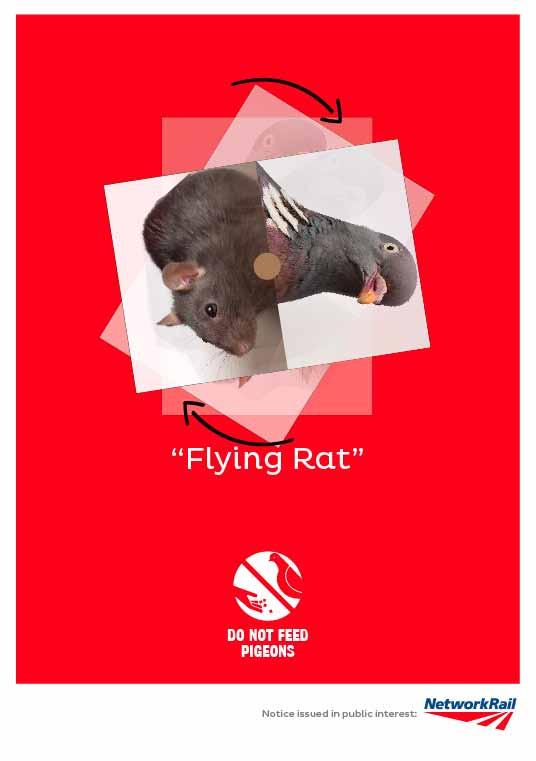

Analysis- Rhetoric:
The concept of the rhetoric is commonly applied in literature and philosophy fields and use of language as a foundation for a reasoned argument. The art of rhetoric comprises many distinct phases such as figures of speech, irony, antithesis, metonymy, synecdoche, pun, metaphor, personification
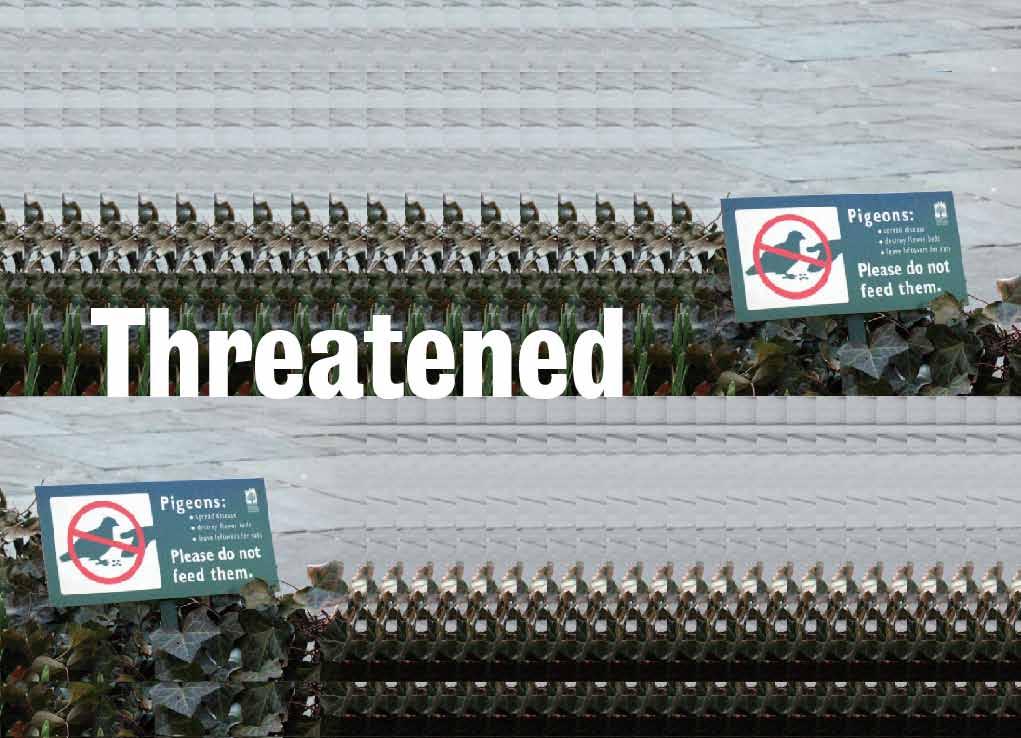
and hyperbole. To understand rhetoric in simple term, it is an art persuasive speaking or writing, primarily the use of figures of speech.
However, rhetoric in visual communication design could be defined as the discovery of ideas, the arrangement
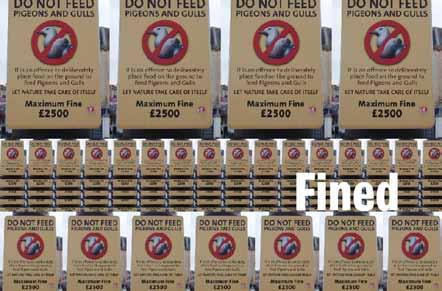
of ideas, the stylistic visual treatment of an idea and the way in which the subject matter is presented. Some of them could be compared directly to graphic design methodologies such as concept, composition, style and format.







Analysis- Icon & symbol:
The author David Crow writes in his book ‘visible signs’(Crow, 2003), Peirce’s theories of semiotics stated that there are three types of signs used within visual, verbal or other forms of communication: icon, index and symbol.
Icons are those communicate
the idea of the thing they represent by directly or imitating the recognisable character of the original object or subject. For example, we can consider a photograph of someone could be described as an iconic sign in that it physically matches the person it represents.
Symbol: there is no logical association between the sign and what it indicates. These signs rely entirely on the reader’s having learned the relationship between the sign and the meaning. For example, the red cross is a symbol that we understand to suggest aid.




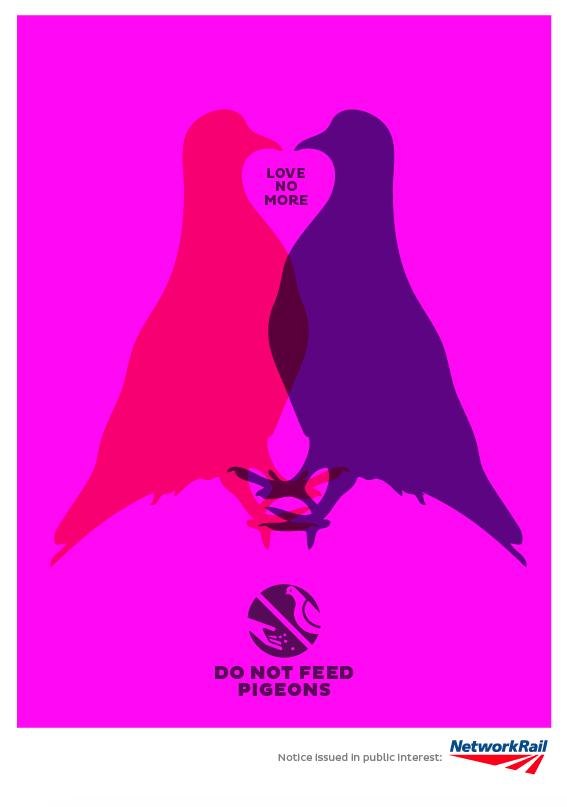
>>>>>>>>>>>>>>>>>>>>>>> >>>>>>>>>>>>>>>>>>>>>>> >>>>>>>>>>>>>>>>>>>>>>> >>>>>>>>>>>>>>>>>>>>>>> >>>>>>>>>>>>>>>>>>>>>>> >>>>>>>>>>>>>>>>>>>>>>> >>>>>>>>>>>>>>>>>>>>>> >>>>>>>>>>>>>>>>>>>>>>> >>>>>>>>>>>>>>>>>>>>>>> >>>>>>>>>>>>>>>>>>>>>>> >>>>>>>>>>>>>>>>>>>>>>> >>>>>>>>>>>>>>>>>>>>>>> >>>>>>>>>>>>>>>>>>>>>>> >>>>>>>>>>>>>>>>>>>>>>> >>>>>>>>>>>>>>>>>>>>>>> >>>>>>>>>>>>>>>>>>>>>>> >>>>>>>>>>>>>>>>>>>>>>> >>>>>>>>>>>>>>>>>>>>>>> >>>>>>>>>>>>>>>>>>>>>>> >>>>>>>>>>>>>>>>>>>>>>> >>>>>>>>>>>>>>>>>>>>>>> >>>>>>>>>>>>>>>>>>>>>>> >>>>>>>>>>>>>>>>>>>>>>> >>>>>>>>>>>>>>>>>>>>>>> >>>>>>>>>>>>>>>>>>>>>>> >>>>>>>>>>>>>>>>>>>>>>> >>>>>>>>>>>>>>>>>>>>>>> >>>>>>>>>>>>>>>>>>>>>>> >>>>>>>>>>>>>>>>>>>>>>> >>>>>>>>>>>>>>>>>>>>>>> >>>>>>>>>>>>>>>>>>>>>>> >>>>>>>>>>>>>>>>>>>>>>> >>>>>>>>>>>>>>>>>>>>>>> >>>>>>>>>>>>>>>>>>>>>>> >>>>>>>>>>>>>>>>>>>>>>> >>>>>>>>>>>>>>>>>>>>>>> >>>>>>>>>>>>> Content: Area of focus ‘Waterloo’ Observation & Research / Visual research Categories information Analyse : Denotation/connotation SWOT/TOWS 5Ws Visual Experiment: Idea generation Iterative Point of difference Analyse: Metaphor Rhetoric Icon/Symbol Meaning & Context

Prototyping:
Prototyping allows us to give the closest functional experience of the produce; a mockup shows the feel, texture and colour of the design. Sometimes a design solution could look fantastic on the computer screen, but you won’t know if it works in the realy world. Not only
prototypes provide proof of concept but expose any flaws in communication and usability of the object.


The prototyping could be segregated into different groups. The magic is to use the right type of prototyping for the right kind of work





and at the right time.
In the creativeblog.com, the blogger writes (The importance of prototyping your designs, 2014) about two type of prototypes, one conceptual and another Feasibility prototype.
Conceptual Prototyping
enables you to analyse the different type of approaches to your designs. However, the feasibility prototype is not fundamentally an extension of conceptual prototyping; it could gain from conceptual prototyping.


Outcome:
Just creating an outcome without considering the indepth research could give aesthetically pleasing solutions but most likely will not meet the expectation of the actual need. The article (Landscape Design Validation, 2010) suggests to following the process forms the framework
which in a way allows us to evaluate all of needs, problems, and opportunities in a wellorganized manner so that all the aspects are addressed.
On my Unit-One field of study project, I had conducted initial research study, followed by analysis and synthesis, and
finally, I created a prototype to test the feasibility test.

Testing with Audience:
It is believed that testing of products and concepts are done properly, They could dramatically improve the chances of a successful launch of a new product/ service. Testing presents benchmarks and diagnostics to focus development on the opportunities of
highest potential.
According to (mmrstrategy. com, 2016) strategists, The aim of concept and product testing with targeted audience is a simple one: to decide which concepts and products can create enough interest among consumers. In other words,


testing keeps development resources focused on the winning concept.
Concept testing assesses new concepts before the product is developed. In general, concept tests suggest ideas for new products/services. On the other hand product testing
assesses new products and new product prototypes. Only in-market testing evaluates new products/services in markets, where they are for sale to targeted consumers to measure customer response.
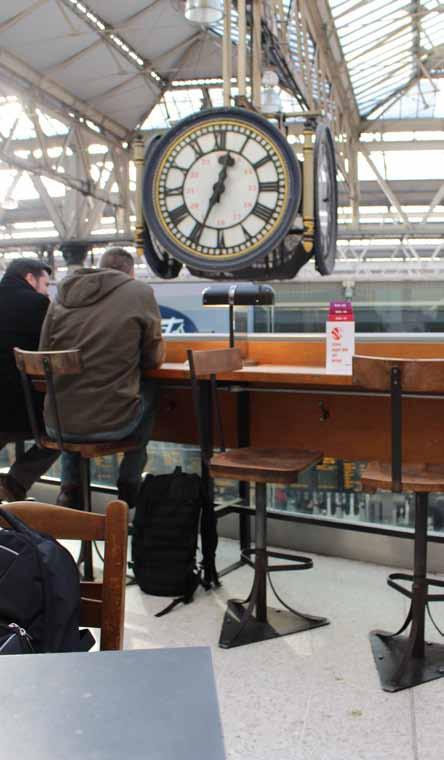
My testing included all three, conceptual testing,
product feasibility testing and marketing test to determine the intended message is reach to the targeted audience and its impact.

References:
amazon.com, (n.d.). [image] Available at: http://astore.amazon. com/coolinfog-20/detail/3836528797 [Accessed 3 Dec. 2016].
Author obsessed. (2012). [image] Available at: http:// shellyandzach.blogspot.co.uk/2012/08/authorobsessed.html [Accessed 21 Nov. 2016].
Bramston, D. (2009). Idea Searching. 1st ed. AVA Publishing, pp.14-140.
Control, (2017). Diseases Spread by Pigeons. [online] Panther Pest Control. Available at: http://www.pantherpestcontrol.co.uk/ news/diseases-spread-by-pigeons/ [Accessed 4 Dec. 2016].
Crow, D. (2003). Visible signs. 1st ed. Crans-presCeligny, Switzerland: AVA Pub. SA, pp.29 - 50.
dailymail.co.uk, (2009). [image] Available at: http://www. dailymail.co.uk/news/article-1218603/The-60-000-kiillerloose-Trafalgar-Squar.html [Accessed 15 Dec. 2016].
dailymail.co.uk, (2013). Attack of the angry birds: Guerrilla street artists cover walls with giant animal murals. [image] Available at: http://www.dailymail.co.uk/news/article-2354486/Itswild-London-Street-artists-brighten-capital-huge-works-artfeaturing-pigeons-foxes-squirrels.html [Accessed 26 Dec. 2016].
Designshack.net. (2016). How & Why Prototypes Are Mandatory for Good Design | Design Shack. [online] Available at: https:// designshack.net/articles/graphics/how-why-prototypesare-mandatory-for-good-design/ [Accessed 19 Dec. 2016].
Dictionary, d. (2017). design brief Definition in the Cambridge English Dictionary. [online] Dictionary.cambridge. org. Available at: http://dictionary.cambridge.org/us/ dictionary/english/design-brief [Accessed 7 Dec. 2016].
dictionary.com. (2017). In: dictionary.com, 1st ed. [online] Available at: http://www.dictionary.com/ browse/research [Accessed 5 Dec. 2016].
etsy.com, (2016). Top categories for “pigeon”. [image] Available at: https://www.etsy.com/search?q=pigeon [Accessed 4 Dec. 2016].
Gessato Blog. (2012). Pigeon Umbrella, by London Undercover X Staple - Gessato Blog. [online] Available at: http://blog. gessato.com/2012/06/15/pigeon-umbrella-by-londonundercover-x-staple/ [Accessed 14 Dec. 2016].
Isixsigma.com. (2016). Determine The Root Cause: 5 Whys. [online] Available at: https://www.isixsigma.com/tools-templates/causeeffect/determine-root-cause-5-whys/ [Accessed 22 Nov. 2016].
Jerolmack, C. (n.d.). The Cultural-Spatial Logic of Problem Animals. [online] environment.as.nyu.edu. Available at: http://www.environment.as.nyu.edu/docs/IO/8744/ socialproblems.pdf [Accessed 14 Dec. 2016].
JUST™ Creative. (2008). How To Write An Effective Design Brief and Get The Design You Want! | JUST™ Creative. [online] Available at: http://justcreative.com/2008/09/26/how-towrite-an-effective-design-brief/ [Accessed 7 Dec. 2016].
Klement, A. (2015). Design for progress, not outcomes. [online] Jobs to be Done. Available at: https:// jtbd.info/design-for-progress-not-outcomes3c9f1c1f16f1#.rt89xzhrj [Accessed 11 Dec. 2016]
Landscape Design Validation. (2010). Design Outcome versus Design Process. [online] Available at: https:// ldvalidate.wordpress.com/2010/03/30/design-outcomeversus-design-process/ [Accessed 15 Dec. 2016].
London Birds, (2015). Bugwoman on Location – Waterloo Station. [image] Available at: https://bugwomanlondon. com/2015/03/21/bugwoman-on-location-waterloostation/comment-page-1/ [Accessed 31 Nov. 2016]
londonist.com, (2015). [image] Available at: http:// londonist.com/2015/03/haveyouheardthebirdistheword [Accessed 14 Dec. 2016].
londonpigeons.co.uk, (2013). [image] Available at: http:// www.londonpigeons.co.uk/ [Accessed 3 Dec. 2016].
londonundercover.co.uk, (2016). [image] Available at: https://londonundercover.co.uk/product/grey_pigeon_ monogram_umbrella/ [Accessed 9 Dec. 2016].
McSmith, A. (2010). The pigeons have gone, but visitors are flocking to Trafalgar Square. [online] The Independent. Available at: http://www.independent.co.uk/news/uk/thisbritain/the-pigeons-have-gone-but-visitors-are-flocking-totrafalgar-square-2041675.html [Accessed 20 Dec. 2016].
mmrstrategy.com. (2016). 10 Best Practices to Improve Your Concept and Product Tests. [online] Available at: http://www. mmrstrategy.com/wp-content/uploads/2015/02/Concept-
and-Product-Testing-5-25-121.pdf [Accessed 27 Dec. 2016].
MOUNT, H. (2009). HARRY MOUNT: The £60,000 killer loose in Trafalgar Square...but don’t worry, it’s just a friendly hawk. [online] Mail Online. Available at: http://www. dailymail.co.uk/news/article-1218603/The-60-000-kiillerloose-Trafalgar-Squar.html [Accessed 16 Dec. 2016].
Noble, I. and Bestley, R. (2011). Visual research. 2nd ed. Lausanne: AVA, p.9.
Panther Pest Control. (2015). Diseases Spread by Pigeons. [online] Available at: http://www.pantherpestcontrol.co.uk/ news/diseases-spread-by-pigeons/ [Accessed 18 Dec. 2016].
Penne, H. (2015). Fighter Pigeons…..Medals Won In WWII… Really |. [online] Quadcitiesdaily.com. Available at: http:// quadcitiesdaily.com/?p=280647 [Accessed 11 Dec. 2016].
Pikaland.com, (2008). Review. [image] Available at: http:// www.pikaland.com/2008/10/28/review-how-to-be-anexplorer-of-the-world/ [Accessed 25 Oct. 2016].
Psychologyresearchhelp.wiki.usfca.edu. (2016). Psychology Research Help - Empirical Research. [online] Available at: http://psychologyresearchhelp.wiki.usfca.edu/ Empirical+Research [Accessed 6 Dec. 2016].
Research Methodology. (2016). Deductive Approach (Deductive Reasoning) - Research Methodology. [online] Available at: http:// research-methodology.net/research-methodology/researchapproach/deductive-approach-2/ [Accessed 8 Dec. 2016].
Rowley, E. (2017). Soaring cost of hawks to scare pigeons from Trafalgar Square. [online] Evening Standard. Available at: http://www.standard.co.uk/news/soaringcost-of-hawks-to-scare-pigeons-from-trafalgarsquare-6701405.html [Accessed 14 Dec. 2016].
seattles travels, (2011). Feeding Pigeons in Trafalgar Square. [image] Available at: http://seattlestravels.com/feedingpigeons-in-trafalgar-square/ [Accessed 4 Dec. 2016].
Segmentationstudyguide.com. (2012). Points-ofdifference (POD). [online] Available at: http://www. segmentationstudyguide.com/understanding-perceptual-
maps/points-of-difference-pod/ [Accessed 30 Nov. 2016].
SLATER, T. (2014). [image] Available at: http://www.spiked-online. com/newsite/article/banksy-the-artist-in-residence-of-the-newsnobby-elite/15979#.WG2cgraLQ-c [Accessed 14 Dec. 2016].
Smith, K. (2011). How to be an Explorer of the World by Keri Smith. [online] Penguin.co.uk. Available at: https:// www.penguin.co.uk/books/181050/how-to-be-anexplorer-of-the-world/ [Accessed 13 Dec. 2016].
Taylor, L. (2013). London pigeons. [online] Londonpigeons.co.uk. Available at: http://www. londonpigeons.co.uk/ [Accessed 18 Dec. 2016].
The importance of prototyping your designs. (2014). [Blog] Creative Bloq Staff. Available at: http://www. creativebloq.com/netmag/importance-prototypingyour-designs-81412694 [Accessed 18 Dec. 2016].
Time Out Blog. (2015). Flock of neon pigeons lands on the lampposts of Soho – Now. Here. This. – Time Out London. [online] Available at: http://now-here-this. timeout.com/2015/02/03/flock-of-neon-pigeons-landon-the-lamposts-of-soho/ [Accessed 17 Dec. 2016].
trekearth.com, (2016). [image] Available at: http://www.trekearth. com/gallery/Europe/United_Kingdom/England/London/ Trafalgar_Square/photo635082.htm [Accessed 4 Dec. 2016].
visitlondon.com, (2016). Trafalgar Square. [image] Available at: http://www.visitlondon.com/things-to-do/ place/283774-trafalgar-square [Accessed 4 Dec. 2016].
wikimedia.org, (2015). [image] Available at: https://upload.wikimedia. org/wikipedia/commons/0/0e/Histoplasma_capsulatum_ var._duboisii._PHIL_4221_lores.jpg [Accessed 5 Dec. 2016].
Yale, R. (2010). Cryptococcosis - Mucicarmine stain. [image] Available at: https://www.flickr.com/photos/pulmonary_ pathology/5280759612 [Accessed 10 Dec. 2016].
Zimmerman, E. (2003). Iterative Design. [online] Ericzimmerman. com. Available at: http://ericzimmerman.com/files/ texts/Iterative_Design.htm [Accessed 14 Dec. 2016].














































 Animal presence in Waterloo...
Animal presence in Waterloo...




































































 (SLATER, 2014)
(SLATER, 2014)





 Legal notice receiver for feeding pigeons...
Legal notice receiver for feeding pigeons...













































